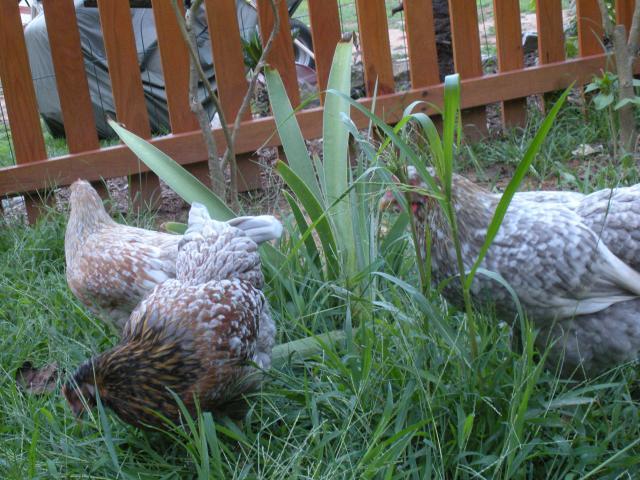Yes, I'm wondering because I've definately seen a lot of "gray" color on the Swedish Flower Hens. I also had it in my Aloha Chickens, early on. I introduced the Blue color from a blue wheaten Ameraucana to see how it would work. (It was surprisingly easy to bring in!) The problem is, I didn't want to end up with "splash" chickens in the mix. (Since blue x blue gets black, blue, and splash chicks.) From what I understand, both Lavender and Dun have the effect of lightening black colors. Lavender turns it a rosy-gray, and Dun turns it a dark brown with one gene, or a light tan (Khaki) with two sets of the Dun gene. (I could be wrong on this.)
Anyway, Porcelain Mille D'Uccle birds are a mottled (mille) color with Lavender making the black spots a soft gray color, but since Lavender doesn't make Splash, there are no Splash Milles. I'm kind of thinking of going that way (someday) on the Aloha project - introducing the Lavender gene from Lavender Orps to avoid Blue x Blue = Splash chicks. But I thought I'd check and see what gene causes the gray feathers in Blommehons?
Here's someone's blog entry from over there that clearly shows gray (or lavender?) on some of the Swedish Flower Hens:
http://hemma.punt.nl/?a=2011-07
And more:
http://www.stallpooh.se/lokshusblogg/web/web/hons.html
I love searching "Blomme Hons" on Google Images and getting all the European sites!
Anyway, Porcelain Mille D'Uccle birds are a mottled (mille) color with Lavender making the black spots a soft gray color, but since Lavender doesn't make Splash, there are no Splash Milles. I'm kind of thinking of going that way (someday) on the Aloha project - introducing the Lavender gene from Lavender Orps to avoid Blue x Blue = Splash chicks. But I thought I'd check and see what gene causes the gray feathers in Blommehons?
Here's someone's blog entry from over there that clearly shows gray (or lavender?) on some of the Swedish Flower Hens:
http://hemma.punt.nl/?a=2011-07
And more:
http://www.stallpooh.se/lokshusblogg/web/web/hons.html
I love searching "Blomme Hons" on Google Images and getting all the European sites!





